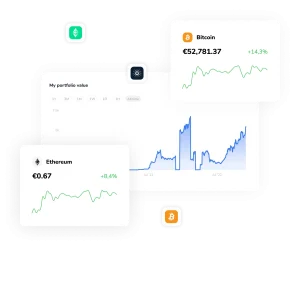
The bands are made up of Moving Average and Standard Deviation lines overlaid on price bars. They can be used to identify possible points of support and resistance and gauge the volatility of the market. Traders often use Bollinger bands in conjunction with other tools, such as candlestick charting, to help them make trading decisions.
What are Bollinger Bands?
They are a versatile technical analysis tool that can be used in various ways to help traders make informed trading decisions. They are made up of a moving average and an upper and lower standard deviation line. The moving average acts as support/resistance for the price, while the standard deviation lines measure volatility in the market.
Traders often use Bollinger bands alongside technical analysis tools, such as candlestick charting or Fibonacci retracement levels. By combining different indicators, traders can gain a more holistic view of market conditions and identify areas where there may be potential opportunities to profit from short-term price movements.
The benefits of using Bollinger bands in trading
There are several key benefits to using Bollinger bands in trading.
One of the main benefits of using Bollinger bands is that they can help traders identify potential support/resistance areas in the market. By observing where the price has previously reacted off the moving average, traders can anticipate possible future support or resistance levels. It can help them make more informed decisions about their trading strategies, such as when to enter or exit a trade.
Another benefit of Bollinger bands is that they can be used to gauge the market’s volatility. The width of the bands will typically increase when markets are more volatile and contract when they are less so. It can be helpful for traders who are looking to take advantage of short-term price movements in the market.
Tips for optimising your Bollinger band trading strategy
While Bollinger bands can be a helpful tool for traders, it is essential to remember that they should only be used as part of a broader trading strategy. Here are some tips for optimising your Bollinger band trading strategy
Combine Bollinger bands with other technical indicators- As mentioned previously, Bollinger bands work best when used in conjunction with other technical indicators. By combining different indicators, traders can gain a more holistic view of market conditions and identify areas where there may be potential opportunities to profit from short-term price movements.
Use Bollinger Bands to identify overbought and oversold conditions- One of the most common ways to use Bollinger bands is to identify overbought and oversold conditions in the market. When the price is trading close to the upper Bollinger band, it is considered overbought, and when it is trading close to the lower Bollinger band, it is considered oversold.
Take profit levels at previous areas of support and resistance- Another common way to use Bollinger bands is to take profit levels at previous areas of support and resistance. By observing where price has previously reacted off the moving average or standard deviation lines, traders can identify potential areas where they may be able to take profit in the future.
Be patient and wait for confirmation- One final tip is to be patient and wait for confirmation before entering a trade. It’s often best to wait for the price to break out of the Bollinger bands before taking a position, as this can provide further confirmation that a move is likely to continue.
Conclusion
These are just some examples of how Bollinger bands can be used to make informed trading decisions. It is up to each trader to experiment with different settings and indicators to find what works best for them. Traders can develop their own Bollinger band trading strategy that suits their unique style and preferences with practice and time; find more info here.






